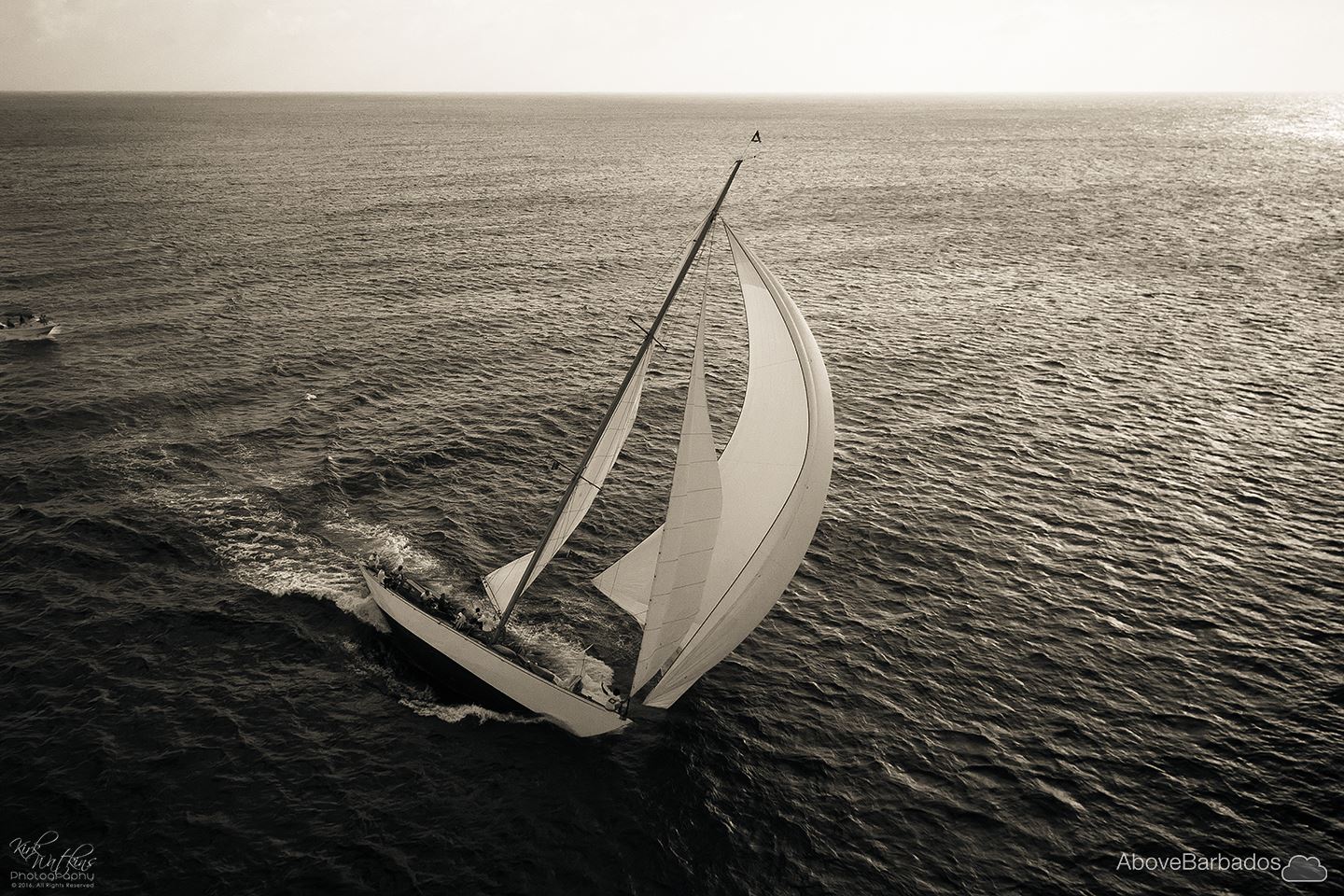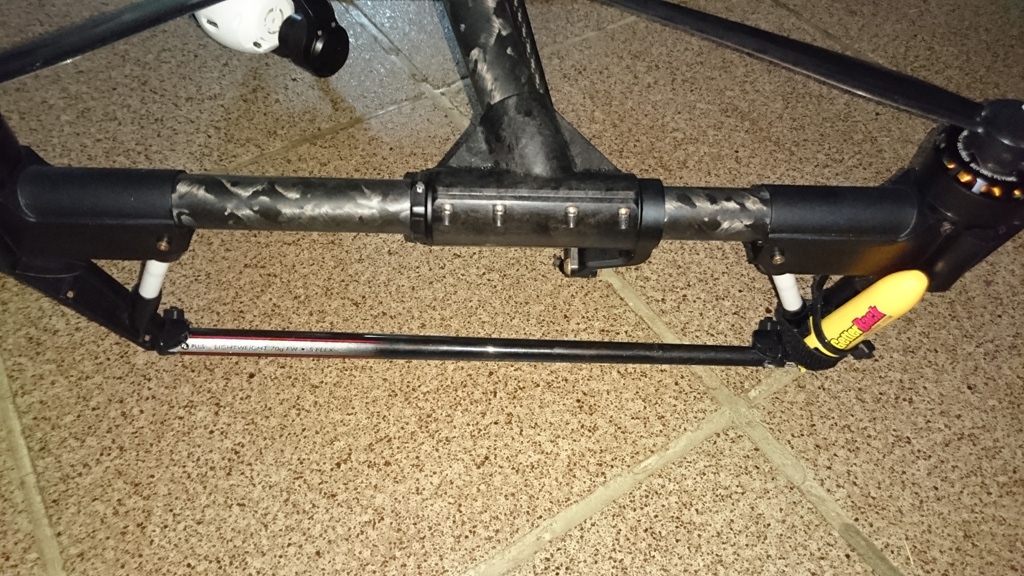Above Everywhere are licensed & insured aerial video & photography specialists. Utilising remote-controlled quadcopters / multi-rotor UAVs / drones.
At Above Barbados pretty much every other shoot we do involves flying drones over water, while it can be somewhat nerve wracking the first time, with some simple tips and common sense it becomes as routine land-based flights.
Flying boat-to-boat (ie. launching from a moving chase boat to film another) or launching and flying from the same boat adds more challenges to conquer.
Here are our tips for safe and enjoyable over-water flying.
1. Monitor those gauges like a hawk, know your gauges like a sage
Even more than normal, keep an absolute hawk-eye on those gauges. Battery life is key, so make sure the percentage is enabled and on screen while keeping a close eye for any battery drops and the remaining flight time. Flying over water it is easy to lose visual references for height, so be monitoring the height more than usual too.
2. Disable the intelligent return to home feature
This is the feature that automatically calculates at which point the unit is about to pass 'the point of no return' and run out of energy to return to the home point - however, if you're on a chase boat, your home point could be kilometres behind you. While you can cancel the popup (and that specific return to home) it can be very distracting.
Be aware that if you're chasing boat-to-boat, you will move far away from your home point (yet still be within sight of the drone), this will confuse the app on how far you have to return and push you into the 'red' zone on the battery bar, thus turning your battery icon red. You can update the home point manually (select the 'H' location marker icon, click on the person) if you have the time (or a 2nd operator) but either way - just be aware of how much battery you think you need to return and catch safely.
Until dynamic home point lock (to the master remote) is available, we find it much safer to just turn off the intelligent return to home feature..
3a. Buy, or make, and fit grab rails
Unless your chase boat is huge, you are going to be hand launching and hand catching the drone. The Inspire's landing legs are very close to the props and grabbing the back of the battery in a rolling boat in high winds is not particularly easy - fitting grab rails between the legs can be as simple as cutting two rods and cable tying them to the each leg - a handy, lightweight and easy grab rail.
Alternatively, there are some available for sale on the web like these ones from Infinity Hobby.
3b. If no grab rails - disable or block intelligent landing gear
So, you have no way or desire to fit catch rails and want to launch and catch like a boss at the back of the battery? Hand catching and launching, with the intelligent landing gear on, will mean frequently the unit will lower it's landing gear putting the props dangerously close - even if you've tried to override it with the switch. Turning off this feature will work 80% of the time until the sonar sensors kick in and if they detect your hand they will still force the landing gear down. Taping over one sonar port will disable the sensor and mean you have full manual control over the landing gear.
4. Bring her home early
You may be comfortable running down to 15-20% over land, but on the water it will take longer to catch and land - even longer if windy or large swells are rolling in the sea. Depending on the weather, add 10% to your safe fly home time to give yourself plenty of leeway in guiding the drone safely to the catcher.
5. Fit an emergency retrieval system
If disaster hits and the drone goes down, it's still worth recovering. There have been stories of people bringing them back once dry (although I wouldn't risk it), but the frame, existing footage/memory card (getting back that footage may still rescue enough to be paid for the job and go some way to your replacement!) and more may be salvageable. An automated buoy may be useful ala the GetterBack system. Easily clipped onto a leg of the drone and secured with a cable tie.
6. Compass and IMU calibrate on land
While some boats may be fibreglass, a lot are metal, and nearly all of them will be radio'd and sonar'd up. Do that compass calibration dance on land before you head out to sea to minimise any noise and problems during setup. Similarly, fire it up before boarding and check for any IMU issues, calibrate that on land before leaving if required.
7. Dual fly, or at least spot
Two sets of eyes are better than one. The second set can watch another controller, over your shoulder to help with the reading of gauges, spot the drone should you lose feed and advise on any sudden unnoticed elevation drops. Also a handy set of arms to launch and to catch...
8. Launch with the wind, hard. Land into the wind, soft
Launching with the wind will ensure the drone doesn't immediately drift back into the launch boat. Launch hard - full throttle straight up to clear everything quickly then let the drone settle for checks.
Catching against the wind is easier as the boat is pointing upwind and the drone can drift towards you slowly. Pay careful attention to the rise and fall of the boat as the Inspire will maintain it's height - you won't.
9. Update home point
If you have the time, and you're still relying on home point for direction and emergencies despite being on a moving platform, be sure to update your home point to the remote every few minutes.
10. Carry towels and covers
When moving between locations, if you're not packing away the Inspire and it's on an open deck, be sure to stop water spray damage by covering in a towel, or, carrying a large trash bag to cover it with between flights.
11. Backup every flight
It is a good idea to carry mobile storage and take a backup of footage after every flight - if the worst case happens and you lose your unit - you might still have enough footage to complete the job! Multiple memory cards help here.
12. Be aware of ocean swells
Boats rise and fall, masts swing. You may think you're clear on height, all it takes is a rolling swell or a swing of a mast and the 10ft clear that you thought you were is now gone!
13. Charging those batteries
If you're all day out on a boat chances are, unless it's a big one, it won't have any plug sockets. So either have enough batteries to last the day, or, get yourself a portable inverter so you can keep charging. The standard Inspire intelligent charger pulls down ~220W so don't skimp, you'll need a decent one. Also, some cigarette lighter sockets limit their output so be prepared to crocodile clip direct to the boat's battery to keep going!
Do you have any tips of your own? Comment below and share the experience!







